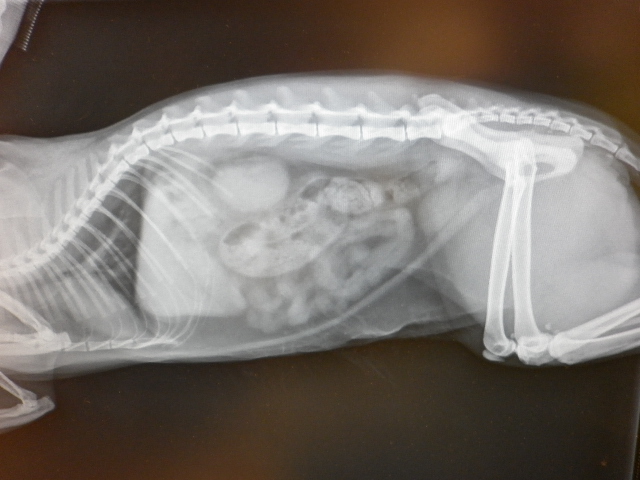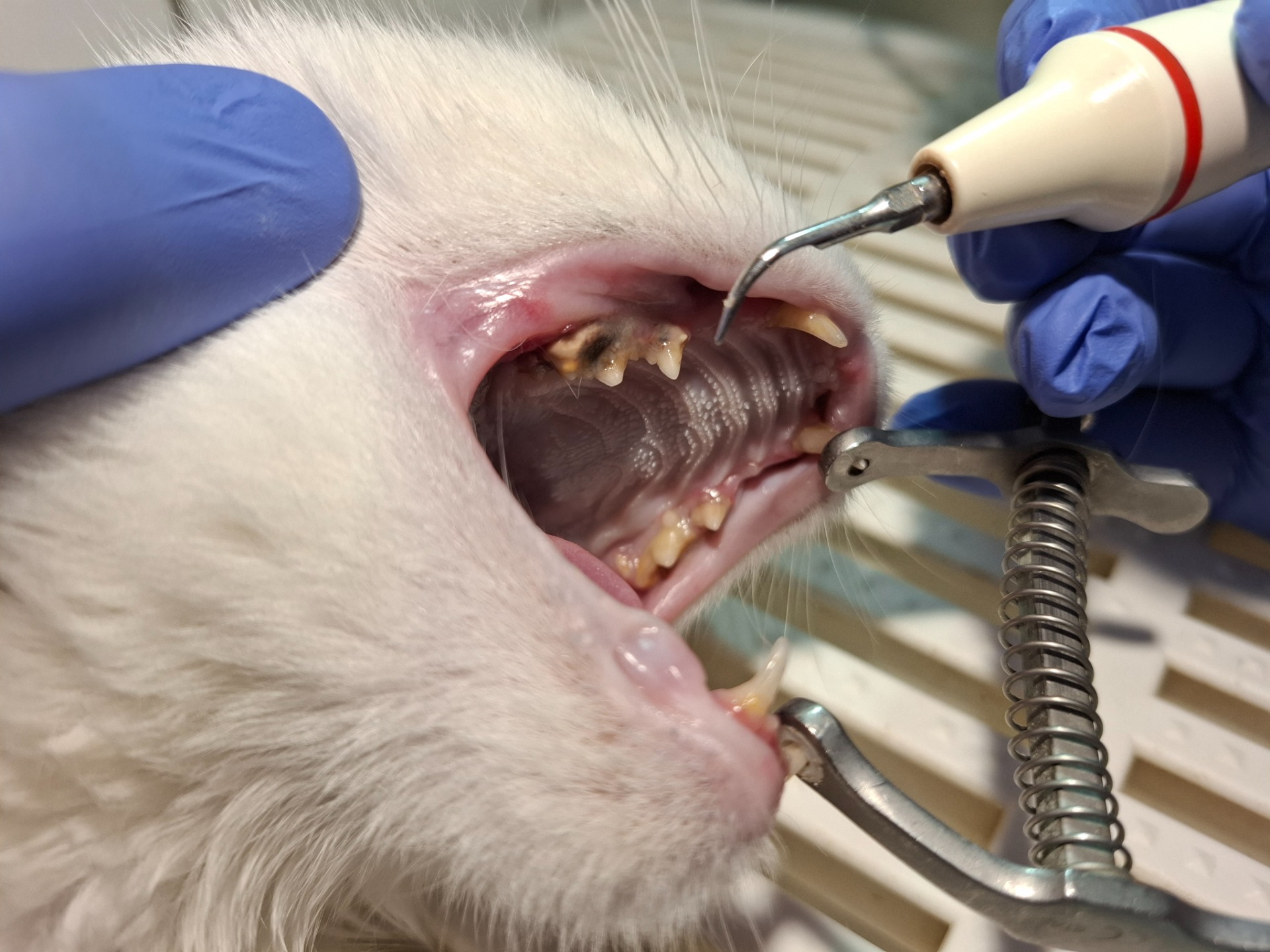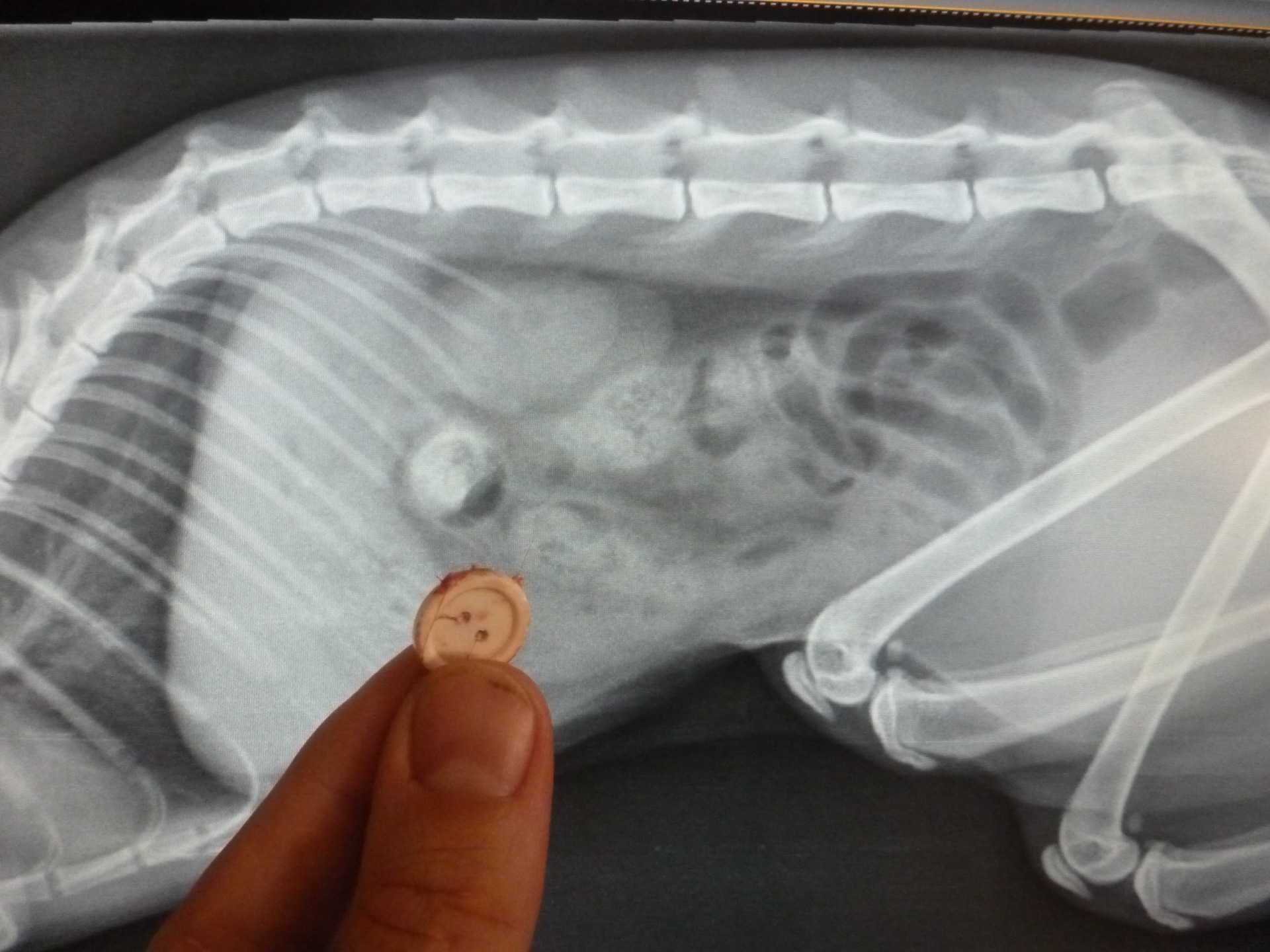Digestive system problemes in cats

Plaque

Introduction:
Plaque is a very common problem in carnivorous animals. The alkaline pH and bacterial flora of the mouth create an environment favourable for plaque, and eventually calculus, formation on the surface of the teeth.
Symptoms:
Plaque is not just an oral hygiene problem. Plaque will cause gum inflammation (gingivitis) and the causative agents, which can enter the bloodstream along the inflamed gum line, may even affect other organs.
The first symptoms of gingivitis are bleeding and redness along the gum line. In case of acute gum inflammation, irreversible gum recession may develop. The teeth may also eventually become loose or fall out.
The bacteria entering the bloodstream can cause inflammation of the heart valves, which may lead to heart valve insufficiency. Inflamed plexus in the kidneys, liver or in other organs may occur.
Prevention and Treatment:
Prevention is very important! Smaller dog breeds are more susceptible to developing plaque and calculus, so prevention should be started when they are puppies. At first, it is sufficient to just touch the puppy's mouth or teeth. There are many ways to defend against plaque and calculus formation, but the most important one is brushing the teeth. There are some plaque reducing nutritional supplements and dry foods available. Safe teeth-cleaning chew toys can also be used.
If an animal is susceptible to plaque and calculus buildup, it can only be slowed, and not totally prevented. Some animals let the mild type of plaque be picked from their teeth while they are awake, however, proper plaque and calculus removal is only possible with ultrasound cleaning, which is only tolerated while they are under anaesthesia. Besides ultrasonic plaque removal, local treatment of gum inflammation and antibiotics are often necessary. In some cases, the treatment of diseases in further organs is needed.
Gut inflammation (ENTERITIS)

Introduction:
Gut inflammation can evolve due to many reasons. It may be caused by infectiong agent (bacteria, virus, parasite, fungus), spoiled food, toxic material (e.g. chemicals, drugs which irritate the gut mucosa) or food intolerance.
Symptoms:
Symptoms are the following: liquid faeces, possibly loss of housetrainedness, vomiting. In case of colon inflammation, mostly pappy, soft faeces can be notices.
Diagnosis:
Usually, a diagnosis can be made according to the anamnesis, symptoms, physical examination; but sometimes stool-examination or abdominal ultrasound test is needed to get the exact diagnosis.
Treatment:
In all cases, fasting, tea, diet and causal treatment (pl. antibiotics), possibly probiotics. In severe cases, if the patient has lost a big amount of liquids with diarrhea or vomiting, an infusion may be needed.
GUT DISCLOSURE (ILEUS)

Introduction:
The most common reason of ileus is swallowing objects, which can block the gut cavity. Less common is the gut obliterated by disease processes starting from the gut wall, mostly gut tumour may block the gut cavity. Rarely, other problems of the stomach cavity may compress the gut cavity from outside, causing ileus.
Symptoms:
The typical symptom of total ileus is vomiting. The closer the obliteration to the stomach is, the heavier the vomiting is. After a few time, there is no stool. Lack of appetite, abdominal pain, abdominal cramps, gassy guts, ever bigger stomach, deteriorative condition, dejectedness is common. If the obliteration is not complete, namely something partially blocks the gut cavity, the symptoms are less visible, for example vomiting, slow weight loss, bad appetite, smaller amount of stool may be noticed.
Diagnosis:
If ileus is suspected, fast and exact diagnosis is very important for which profound physical examination followed by contrasty X-ray and abdominal ultrasound test are essential.
Treatment:
Usually, surgery is necessary as soon as possible (cutting or sometimes excising), and later conservative post-treatment.
